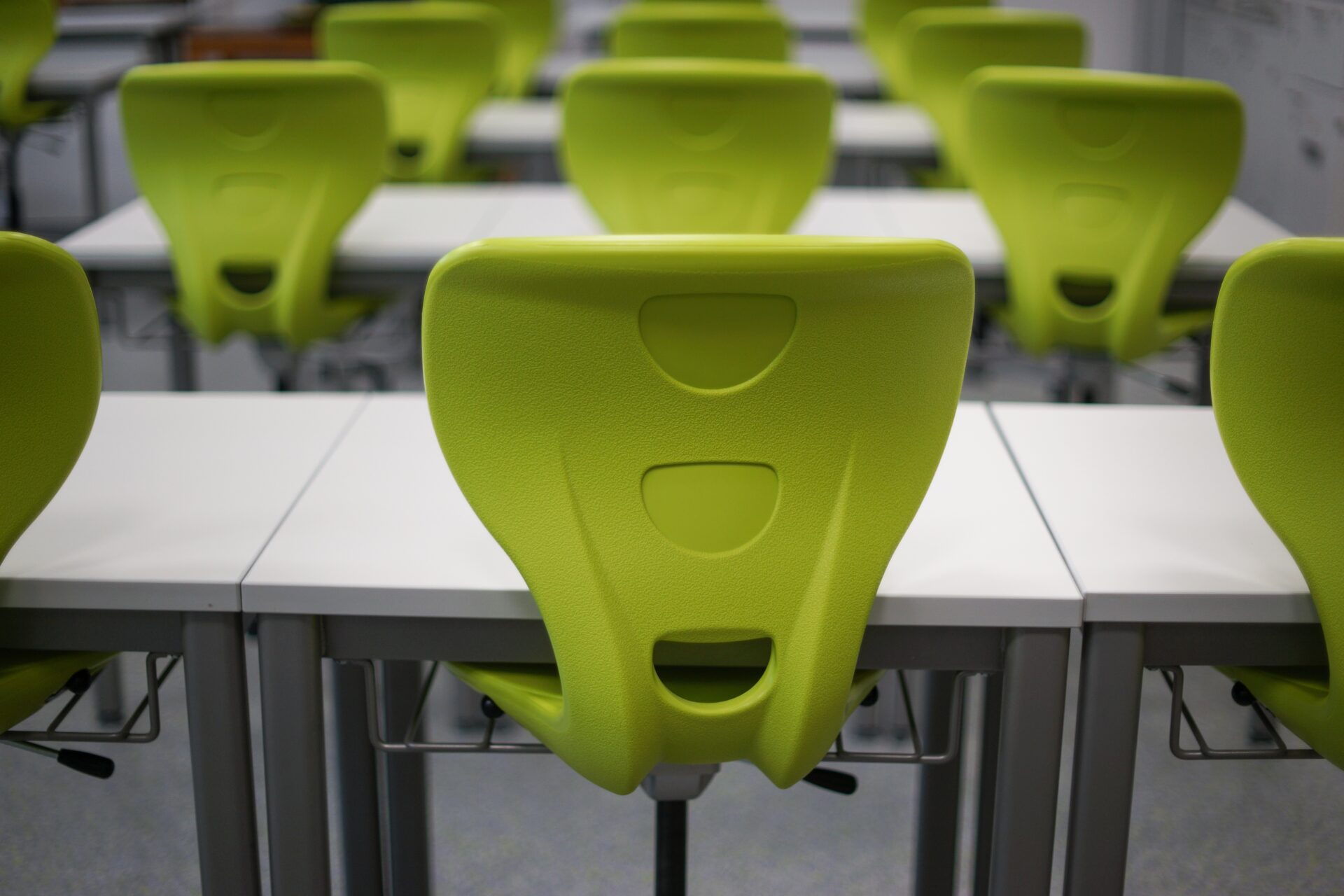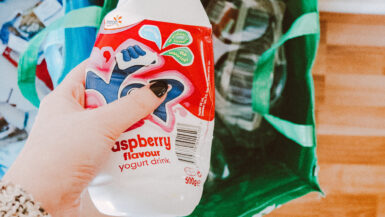As the back-to-school season approaches, parents and students alike face the challenge of preparing for a new academic year. Amidst the excitement of new books, stationery, and backpacks, it is crucial to recognize the alarming amounts of plastic waste generated during this time. This article delves into practical strategies for reducing plastic consumption and fostering a more sustainable, eco-conscious mindset amongst families. From choosing reusable products to making informed purchasing decisions, we explore the core topics that can help you embrace a plastic-free lifestyle during the back-to-school season and beyond. Join us in our mission to create a greener future for our children and our planet.
Eco-Friendly School Supplies: Alternatives to Single-Use Plastics
As parents and students, we have a responsibility to make informed choices when it comes to purchasing school supplies. There are numerous alternatives to single-use plastics that not only help reduce our environmental footprint, but also encourage sustainable habits in children. In this section, we will discuss various eco-friendly options for school supplies and how they can be incorporated into our daily routines.
Plant-Based Pens and Pencils
Traditional plastic pens and pencils contribute significantly to plastic waste. Switching to plant-based alternatives made from materials such as bamboo, recycled paper, or biodegradable cornstarch can help mitigate this issue. These eco-friendly writing instruments perform just as well as their plastic counterparts and can be easily found in most stationery stores or online.
Recycled Notebooks and Paper Products
Paper production has a significant environmental impact, from deforestation to water pollution. Opting for notebooks and paper products made from recycled materials is an effective way to reduce this impact. Additionally, consider purchasing notebooks with refillable pages or using digital note-taking apps to further minimize paper waste.
Reusable Binders and Folders
Plastic binders and folders are notorious for breaking or tearing, leading to unnecessary waste. Consider investing in durable, reusable alternatives made from materials like cardboard, fabric, or recycled aluminum. These options are not only more sustainable but also tend to last longer, saving you money in the long run.
Non-Toxic Art Supplies
Many conventional art supplies, such as markers and paint, contain toxic chemicals that can harm both the environment and our health. Look for non-toxic, eco-friendly options that are made with natural ingredients and come in recyclable or reusable packaging.
Green Lunch Gear
Plastic sandwich bags, cling wrap, and disposable utensils generate a substantial amount of waste each school year. Replace these single-use items with reusable alternatives such as cloth sandwich bags, beeswax wraps, and stainless steel utensils. Additionally, opt for a reusable water bottle instead of disposable plastic bottles to further reduce plastic waste.
By choosing eco-friendly school supplies and teaching our children about the importance of sustainability, we can collectively work towards reducing plastic waste during the back-to-school season and beyond. Embracing these alternatives not only benefits the environment but also instills responsible habits that can last a lifetime.
Sustainable Lunchbox Solutions: Reusable Containers and Utensils
Packing a waste-free lunch is an effective way to reduce plastic consumption during the back-to-school season. By opting for reusable containers and utensils, we can significantly minimize the waste generated from disposable plastic bags, wraps, and cutlery. In this section, we will explore various sustainable lunchbox solutions that not only help protect our environment but also make mealtimes more enjoyable and convenient.
Switching to Bento-Style Lunchboxes
Bento-style lunchboxes are a fantastic alternative to plastic bags and disposable containers. These compartmentalized boxes, made from materials like stainless steel or bamboo, allow you to pack a variety of foods without the need for separate plastic containers or bags. Additionally, their sturdy design ensures that the contents remain intact and fresh throughout the day.
Investing in Leak-Proof Containers
Leak-proof containers made from stainless steel, silicone, or glass are a must-have for packing liquids or foods with sauces. These reusable options not only prevent spills and leaks but also help preserve the taste and quality of your food. Plus, many of these containers are microwave-safe, making it easy to reheat meals at school or work.
Choosing Reusable Sandwich Wraps and Snack Bags
Say goodbye to disposable sandwich bags and cling wrap by choosing reusable alternatives like beeswax wraps or cloth snack bags. These eco-friendly options can easily be washed and reused, reducing plastic waste and saving you money in the long run. Moreover, they come in various sizes and designs, adding a touch of personalization to lunchtime.
Opting for Reusable Utensils and Straws
Disposable plastic utensils and straws are among the top contributors to plastic pollution. Make a conscious effort to carry reusable cutlery made from materials such as bamboo, stainless steel, or even biodegradable wheat straw. Don’t forget to pack a reusable straw for your smoothies or iced drinks, available in materials like stainless steel, silicone, or glass.
Encouraging Proper Cleaning and Maintenance
To ensure the longevity of your reusable lunch gear, it is essential to clean and maintain them regularly. Teach children to wash their containers, wraps, and utensils properly after each use to prevent food residue buildup and potential bacteria growth. Establishing a cleaning routine will help reinforce the importance of sustainability and responsibility in their daily lives.
By adopting these sustainable lunchbox solutions, you can significantly reduce plastic waste during the back-to-school season and beyond. Moreover, these eco-friendly practices encourage healthier eating habits and instill a sense of environmental responsibility in the younger generation, contributing to a greener and more sustainable future for all.
Plastic-Free Backpacks: Choosing Ethical and Durable Materials
A backpack is an essential item for students, carrying everything from textbooks and notebooks to personal belongings. Unfortunately, many conventional backpacks on the market are made from synthetic materials like polyester and nylon, which contribute to plastic pollution and are non-biodegradable. Therefore, when shopping for a new backpack, it is crucial to consider ethical and durable alternatives that minimize environmental impact while still providing comfort, style, and functionality. In this section, we will explore various eco-conscious materials and options for backpacks, ensuring that your back-to-school shopping aligns with your plastic-free lifestyle goals.
Opting for Natural Fiber Materials
Natural fibers like cotton, hemp, and jute are excellent alternatives to synthetic materials in backpack production. These sustainable options are not only biodegradable but also often feature a lower carbon footprint than their plastic counterparts. Look for backpacks made from organic or sustainably-sourced fibers, as these have even less of an environmental impact due to the absence of harmful pesticides and chemicals during cultivation.
Upcycled and Recycled Materials
Another environmentally-friendly option is backpacks made from upcycled or recycled materials, such as PET bottles, discarded fabrics, or rubber tires. These innovative products help divert waste from landfills and reduce the demand for new raw materials. Moreover, recycled materials often undergo a rigorous quality control process, ensuring durability and longevity in your chosen backpack.
Choosing Responsibly-Sourced Leather and Vegan Alternatives
Leather backpacks are a popular choice due to their durability and timeless appeal. However, the leather industry often involves environmental and ethical concerns. To address this, opt for responsibly-sourced leather products that adhere to strict environmental and animal welfare standards. Alternatively, consider vegan leather alternatives made from sustainable materials like cork or Piñatex, which is derived from pineapple fibers.
Supporting Ethical Brands and Fair Trade Practices
When selecting a backpack, it’s essential to support brands that prioritize ethical production and fair trade practices. These companies often ensure fair wages, safe working conditions, and eco-conscious manufacturing processes. By choosing to invest in such brands, you encourage the growth of sustainable and responsible businesses that contribute positively to the environment and society.
Performing Proper Care and Maintenance
Regardless of the material or brand you choose, taking care of your backpack is vital in extending its lifespan and reducing overall waste. Regularly clean and maintain your backpack according to the manufacturer’s guidelines, repairing any damages promptly to prevent further deterioration. Teaching children to take care of their belongings reinforces the importance of sustainability and responsible consumption.
By selecting an eco-friendly backpack made from ethical and durable materials, you can significantly contribute to reducing plastic waste during the back-to-school season. Moreover, these conscious choices inspire others to adopt sustainable practices and create a positive ripple effect throughout the community, ultimately helping to protect our environment for future generations.
Green Classroom Practices: Reducing Plastic Waste at School
Creating a plastic-free environment extends beyond personal choices and requires collective effort, especially within educational institutions. By adopting green classroom practices, teachers and students can work together to reduce plastic waste at school, fostering an eco-conscious mindset that permeates throughout the entire community. In this section, we will explore various strategies and initiatives that can be implemented within classrooms and schools to minimize plastic consumption and promote a more sustainable learning environment.
Encouraging a Bring-Your-Own (BYO) Culture
Many single-use plastic items can be replaced with reusable alternatives when both teachers and students adopt a BYO culture. Encourage everyone to bring their own water bottles, coffee mugs, and utensils to school, reducing the demand for disposable plastics. Teachers can set a positive example by using reusable containers for classroom supplies and avoiding single-use items whenever possible.
Implementing a Recycling and Composting Program
Establishing a comprehensive recycling and composting program within the school can significantly reduce the amount of plastic waste that ends up in landfills. Educate students about proper recycling practices and provide designated bins for different types of waste. Incorporate composting into school gardens or collaborate with local composting facilities to dispose of organic waste responsibly.
Integrating Environmental Education into the Curriculum
Including environmental education as part of the school curriculum can help students understand the consequences of plastic pollution and the importance of sustainable living. Encourage discussions, debates, and projects related to plastic waste reduction, fostering critical thinking and problem-solving skills. Invite guest speakers or organize field trips to recycling centers to provide real-life examples of the impact of our choices on the environment.
Organizing Eco-Friendly Fundraisers and Events
School events and fundraisers often involve the use of disposable plastic items. Instead, opt for eco-friendly alternatives such as reusable decorations, digital invitations, and zero-waste catering. When planning fundraisers, consider selling sustainable products or organizing events that promote environmental awareness, like tree planting or community clean-ups.
Collaborating with Local Businesses and Organizations
Partnering with local businesses and organizations can help schools access resources and support for their plastic waste reduction initiatives. Collaborate with eco-friendly suppliers for school supplies and materials, or work with local environmental organizations to develop educational programs and campaigns. Building strong relationships within the community can amplify the impact of your school’s efforts to reduce plastic waste.
By implementing these green classroom practices, schools can play a vital role in reducing plastic waste during the back-to-school season and beyond. Engaging students, teachers, and the wider community in these initiatives not only fosters a more sustainable learning environment but also empowers the next generation to become environmentally responsible global citizens, ultimately contributing to a healthier and greener future for all.
Organizing a School-Wide Plastic Reduction Campaign: Tips and Ideas
A school-wide plastic reduction campaign can be an effective way to engage students, teachers, and staff in the collective effort to minimize plastic waste during the back-to-school season. By organizing various activities, challenges, and events, your campaign can raise awareness about plastic pollution, foster eco-friendly habits, and ultimately contribute to a more sustainable school environment. In this section, we will provide several tips and ideas to help you plan and execute a successful plastic reduction campaign at your school.
Form a Green Team
Start by assembling a dedicated group of students, teachers, and staff who are passionate about environmental issues and willing to lead the campaign. This “Green Team” can help coordinate the various activities, monitor progress, and ensure that the campaign’s goals are met. Encourage representation from different grade levels and departments to ensure a diverse and inclusive team.
Set Clear Goals and Objectives
Establish specific, measurable, and attainable goals for your campaign, such as reducing plastic waste by a certain percentage or eliminating single-use plastics from the cafeteria. Clear objectives will help guide your campaign’s activities and provide a sense of purpose for all participants.
Involve the Entire School Community
For the campaign to be truly effective, it is crucial to involve the entire school community, including students, teachers, staff, and even parents. Encourage participation by organizing activities and challenges that appeal to different age groups and interests, and provide regular updates on the campaign’s progress to keep everyone engaged and motivated.
Educate and Raise Awareness
Provide educational resources and workshops to help students and staff understand the environmental impact of plastic waste and the importance of reducing its use. Invite guest speakers from local environmental organizations, or screen documentaries and films that highlight the issue of plastic pollution. Incorporate creative elements such as art projects or writing contests to encourage students to express their thoughts and ideas on the topic.
Organize Eco-Friendly Competitions and Challenges
Create friendly competitions and challenges that encourage students and staff to reduce their plastic consumption. For example, organize a reusable water bottle challenge, where classes compete to see who can eliminate disposable plastic bottles for the longest period. Other ideas include a zero-waste lunch challenge, a plastic-free art contest, or a waste reduction relay race.
Collaborate with Local Businesses and Organizations
Partner with local businesses and organizations to support your campaign, either by providing eco-friendly products, sponsoring events, or offering expertise on plastic waste reduction. This collaboration can not only help amplify the impact of your campaign but also strengthen the sense of community around the issue of plastic pollution.
Celebrate Success and Share Achievements
At the end of the campaign, celebrate the achievements and progress made by the school community in reducing plastic waste. Share the results through newsletters, social media, or school assemblies, and recognize the efforts of individuals and groups who have made significant contributions to the campaign. This recognition will help reinforce the importance of plastic waste reduction and inspire continued efforts in the future.
By organizing a school-wide plastic reduction campaign, you can actively engage your school community in the fight against plastic pollution, fostering a more sustainable and environmentally conscious mindset amongst students, teachers, and staff. With these tips and ideas in mind, you can create a successful campaign that not only reduces plastic waste during the back-to-school season but also paves the way for lasting change and a greener future.





Leave a reply